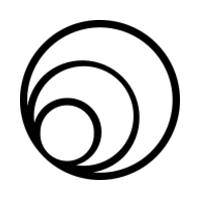A few weeks ago, Inoue and group synthesized and "correctly" characterized the compound yaku'amide, a tridecapeptide named after the sample collection site at 屋久新曽根 (Yakushinsone), again.1,2
I must admit: it's great to see scientists with enough guts to publish corrections to their work.
To put it clearly, this time, the chemists synthesized yaku'amide A and B and realized that the stereochemistry of 4 centres in the molecule were incorrectly assigned the first time around. In 2013, they had synthesized an isomer of the yaku'amides.
What went wrong and how did they figure this out?
Feels like the first time
Back in 2013, Inoue et al. synthesized yaku'amide A. Three years earlier, Matsunaga and company revealed the structure of yaku'amides in their 2010 paper and that determination formed the basis for the current synthesis.3 They derived the amino acid connectivity of yaku'amides A and B using HMBC and NOESY NMR spectroscopy. However, when Inoue synthesized the compound and compared its chromatographic retention time with the naturally derived product, the two did not match.
Matsunaga's structure3
Inoue's (revised) structure1
Marfey's law
The real tactic is Inoue's use of Marfey's analysis of yaku'amide. Ah! Matsunaga also used Marfey's method, you say!
CORRECT!
and they both used L- and D-FDAA (as you are supposed to).4,5
FDAA
Marfey's Reagent (alanine)
c1(N(=[O+])[O-])cc(N(=[O+])[O-])c(NC(C)C(=O)N)cc1F
Matsunaga used only 5 standards as benchmarks (not all stereochemical species) on an ODS (reverse-phase) column and compared the peaks to three fragments of a partially hydrolyzed yaku'amide extract. Because of limited standards, Matsunaga seemed to stumble upon that unfortunate situation where benchmarking just doesn't pan out due to coeluting analytes.
Summary
Inoue's analysis highlights the shortcomings of benchmarking in analytical separations and underscores the insane amount of work needed to perform complete analyses (not to mention complete syntheses). A question remains:
In considerably more complicated sample mixtures (i.e. most real mixtures) is Marfey's analysis overcomplicating or even realistic? Can modern analytical chemistry with its focus on high-dimensional data tackle this anyway?
I would like to summarize by using some language from the great sport and martial art of Judo:
1. Yaku'amide is thought to be planar and linear. Inoue's graphical abstract has a kinked yaku'amide. Matsunaga 1 (yuko) - 0 Inoue
2. Inoue's diagram makes the allo-isoleucine (aIle) more clear by using a dashed line, whereas Matsunaga uses a wedge for the H leaving three in-plane bond lines.
Matsunaga 1 - 1 (yuko) Inoue.
3. Inoue used Marfey's analysis on all possible amino acids derived from yaku'amide. I'll give that a waza ari.
Matsunaga 1 - 2 (waza ari) Inoue
4. Inoue's is (most likely) the correct structure:
Just kidding! There's probably no competition. Matsunaga and Inoue are co-authors of this work!1
References
- Elucidation and Total Synthesis of the Correct Structures of Tridecapeptides Yaku’amides A and B. Synthesis-Driven Stereochemical Reassignment of Four Amino Acid Residues.
Takefumi Kuranaga, Hiroyuki Mutoh, Yusuke Sesoko, Tomomi Goto, Shigeki Matsunaga, and Masayuki Inoue. Journal of the American Chemical Society Article ASAP. http://dx.doi.org/10.1021/jacs.5b05550 - Total Synthesis and Complete Structural Assignment of Yaku’amide A. Takefumi Kuranaga, Yusuke Sesoko, Komei Sakata, Naoya Maeda, Atsushi Hayata, and Masayuki Inoue. Journal of the American Chemical Society 2013 135 (14), 5467-5474. http://dx.doi.org/10.1021/ja401457h
- Yaku’amides A and B, Cytotoxic Linear Peptides Rich in Dehydroamino Acids from the Marine Sponge Ceratopsion sp. Reiko Ueoka, Yuji Ise, Susumu Ohtsuka, Shigeru Okada, Takao Yamori, and Shigeki Matsunaga. Journal of the American Chemical Society 2010 132 (50), 17692-17694 http://dx.doi.org/10.1021/ja109275z
- "GIF/PNG-Creator for 2D Plots of Chemical Structures". http://cactus.nci.nih.gov/gifcreator/, NCI/CADD Group.
- J. Chem. Inf. Comput. Sci. (1983) 23, 61-65. http://dx.doi.org/10.1021/ci00038a002
- Matthew S. MacLennan, The Functional SMILES Perspective, The Winnower 2:e143518.87488 (2015). http://dx.doi.org/10.15200/winn.143518.87488
Appendix
Yaku'amide: C83H145N15O18
Yaku'amide SMILES (no stereochem): CC(C)CC(C)C(=O)C(C)(C)C(=O)NC(C(CC)(C)(O))C(=O)NC(=C(C)CC)C(=O)NC(C)C(=O)NC(=C(C)CC)C(=O)NC(C(C)C)C(=O)NC(C(C)CC)C(=O)NC(C(C)(C)(O))C(=O)NC(C(C)(C)(O))C(=O)NC(=C(C)CC)C(=O)NC(C)C(=O)NC(C(C)C)C(=O)NC(C(C)C)C(=O)NC(=C(C)C)C(=O)NC(C(C)C)CN(C)C
The authors conveniently listed the residue names as:
NTA, OHIle-1, delta Ile-2, Gly-3 (or Ala-3), delta Ile-4, Val-5, allo-Ile-6, OHVal-7, OHVal-8, delta Ile-9, Ala-10,Val-11, Val-12, delta Val-13, CTA
Which is perfect for describing using the functional SMILES perspective.6
Here is the function SMILES {"amino acid residue" perspective}:
CC(C)CC(C)C(=O)C(C)(C)C(=O)1.N1C(C(C)(O)CC)C(=O)2.N2C(=C(C)CC)C(=O)3.N3CC(=O)4.N4C(=C(C)CC)C(=O)5.N5C(C(C)C)C(=O)6.N6C(C(C)CC)C(=O)7.N7C(C(C)(O)CC)C(=O)8.N8C(C(C)(O)CC)C(=O)9.N9C(=C(C)CC)C(=O)%10.N%10C(C)C(=O)%11.N%11C(C(C)C)C(=O)%12.N%12C(C(C)C)C(=O)%13.N%13C(=C(C)C)C(=O)%14.N%14C(C(C)C)CN(C)C
As far as I can tell, CACTUS smiles2gif utility cannot handle two-digit ring ids with "%" header in SMILES strings.
Graph of synthetic procedure used
8->1 is the old synthesis
22->1 is the new synthesis




















No comments:
Post a Comment